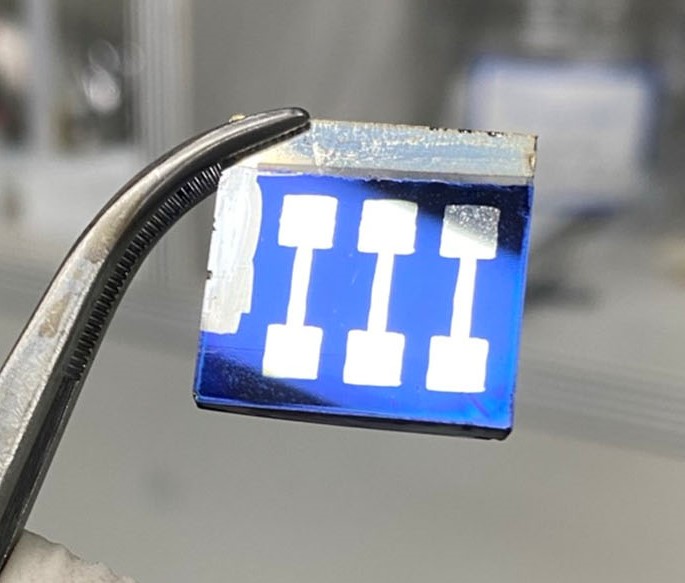Researchers led by the Chonnam National University in South Korea have designed a two-terminal monolithic perovskite-organic tandem solar cell based on a metal ion-doped-perovskite absorber and a “n-i-p” layout.
In n-i-p or “inverted” architecture, the solar cell is illuminated through the electron-transport layer (ETL) side; in the p-i-n structure, it is illuminated through the hole‐transport layer (HTL) surface.
“We demonstrated a new hot-air method for monolithic tandem solar cells and its stabilization through metal ions doping,” the research's lead author, Sawanta S. Mali, told pv magazine, adding that the proposed manufacturing process is free from atomic layer deposition (ALD) and sputtered techniques, which are commonly used for the deposition of a protective interconnecting layer in tandem devices. “Except for thermally evaporated molybdenum trioxide (MoO3) and silver (Ag), all layers were fabricated in ambient air conditions.”
Unlike the conventional antisolvents method, the hot-air technique reportedly facilitates the formation of a highly uniform intermediate complex due to partial evaporation of solvent, thus resulting in a higher perovksite film quality. “We blow a 150 C hot air gun directly over the spinning substrate,” the scientists explained.
The top perovskite cell was built with a substrate made of fluorine-doped tin oxide (FTO), a mesoscopic electron transfer layer (ETL), the perovskite absorber, a hole transport layer (HTL) based on 3,4,9,10-tetra(n-alkoxy-carbonyl)-perylenes (PTAC), a top donor material known as PBDB-T, a buffer layer made of molybdenum trioxide (MoO3), and a silver (Ag) metal contact.
The bottom organic cell was made with a substrate relying on ITO and glass, a window layer of zinc oxide (i-ZnO) and PDI derivative (PDIN), a phenyl-C61-butyric acid methyl ester (PCBM) layer, a MoO3 buffer layer, and an Ag metal contact.
Tested under standard illumination conditions, the champion tandem device built with this architecture achieved a power conversion efficiency of 23.07%, an open-circuit voltage of 2.110 V, a short-circuit current density of of 13.65 mAcm-2, and a fill factor of 80.1%.
The device was also able to retain over 90% of the initial efficiency over 600 h at maximum power tracking under continuous illumination.
“Our approach demonstrates solution-processed absorbers with organic cation passivation to reduce open-circuit voltage loss down to 0.025 V, which is the lowest reported to date,” the scientists stated. “This structure also demonstrates the merits of limited recombination, and high reproducibility.”
The novel cell design was introduced in the paper “All-inorganic halide perovskites for air-processed ‘n-i-p' monolithic perovskite/organic hybrid tandem solar cells exceeding 23% efficiency,” published in Energy & Environmental Science.
This content is protected by copyright and may not be reused. If you want to cooperate with us and would like to reuse some of our content, please contact: editors@pv-magazine.com.




So why precisely are we expected to be
super-impressed by this after Longi announced last month(3.Nov) that they’d achieved 33.9% tandem solar cell efficiency – as reported by none other than PV Magazine here:
https://www.pv-magazine.com/2023/11/03/longi-claims-33-9-efficiency-for-perovskite-silicon-tandem-solar-cell/
Paul G